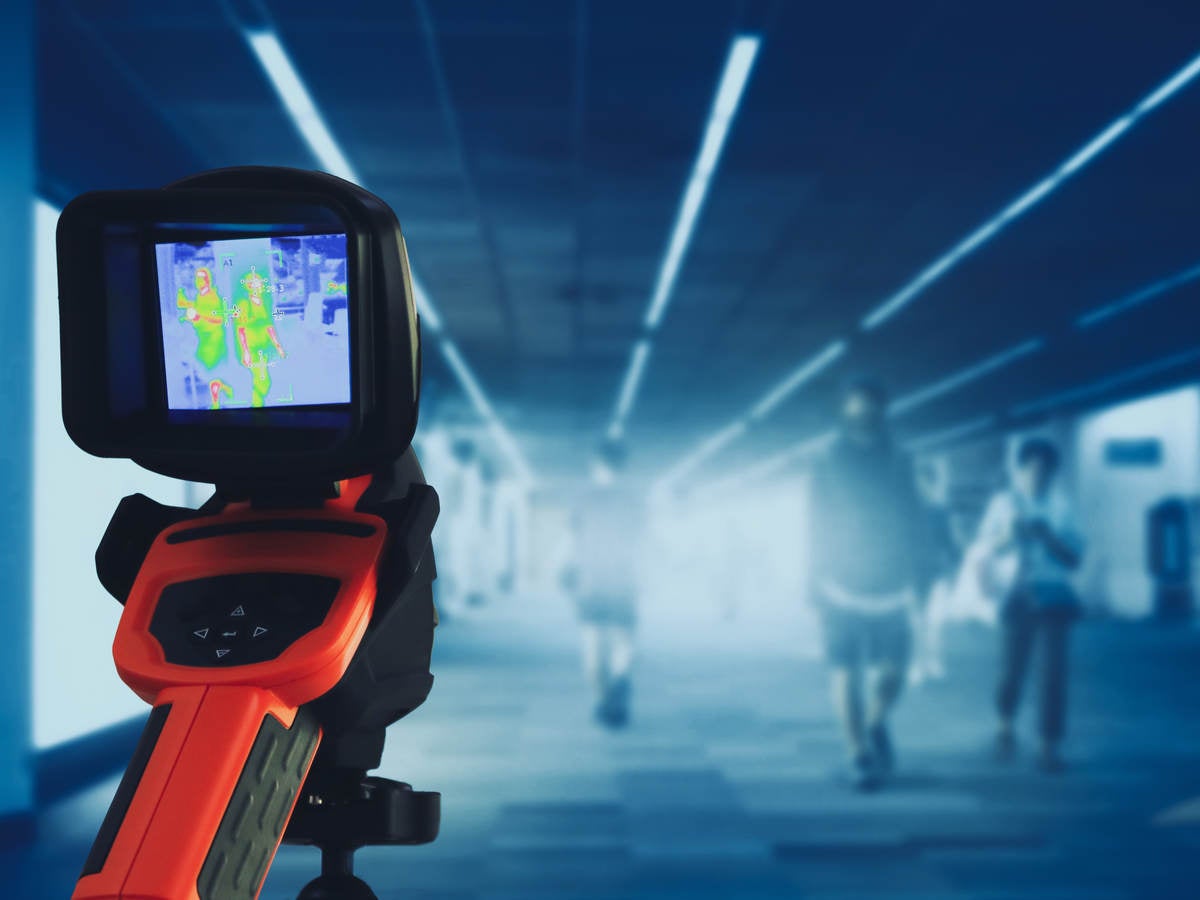October 5, 2020
Practical aspects of medical imaging technology
COVID-19 has driven the desire to help identify people with elevated temperatures (a symptom of the disease) from a distance. Thermography (thermal infrared cameras) is not a new technology, but it is being used in different ways. Thermography manufacturers (some new to the “regulated medical world”) are being presented with some significant challenges.
Following UL’s Thermography whitepaper last month, we will take a closer look at some of the practical aspects of thermography systems. There are many aspects to this medical imaging technology, but we will focus on some of the concepts covered in IEC 80601-2-59 (Medical electrical equipment — Part 2-59: Particular requirements for the basic safety and essential performance of screening thermographs for human febrile temperature screening). During the past six months, UL has completed multiple projects under this standard. To assist manufacturers in preparation for testing and certification to this standard, we have identified some important aspects of this complex standard.
Thermography testing and compliance
First, a critical step in determining compliance is understanding the minimum requirements for spatial resolution. Second, in order to perform laboratory testing of stability and drift, a special test set-up may be required. Understanding these two aspects can help reduce risks as a manufacturer is preparing for testing.
IEC 80601-2-59 addresses the minimum performance requirements through several tests and specifications. One of these deals with the camera’s ability to discern different temperatures at different points in space. Thermal imaging cameras typically have a large aperture, and therefore a limited depth of field. The perpendicular plane in space where the thermal focus is achieved is defined as the ‘target plane’. At this plane, the tests in the standard are conducted and specifications are reviewed. The standard specifies a minimum horizontal and vertical spatial resolution of 1mm. The spatial resolution is directly related to the field of view, the number of pixels, and the focal length. The standard also specifies that the face will fill an area of 240 x 180 pixels. From these two specifications, manufacturers must carefully balance the focal plane distance, the field of view, and sensor resolution to meet the requirements in the standard. The critical specifications need to be understood very early in the project as the performance tests are also conducted at the target plane.
Stability testing
Thermography devices must also be tested for their stability and drift over a minimum 14-day period. The standard states that data is gathered from the camera every five to fifteen seconds. Therefore, this test often requires special software, or a service mode to be utilized during the test. It should be noted that Clause 201.14.13.101 of IEC 80601-2-59 requires the thermography system to communicate this and other information to a network. Statistical analysis is performed on the gathered data to prove compliance. The stability must be less than 0.1 C and the drift must be less than 0.1 C. The 14-day test with a 15s period will result in around 80,000 data points. In order to conduct this test and have the ability to monitor the results during the 14-day period, the system will need to provide the ability to log data, and the log files should be able to be downloaded for analysis periodically.
These two aspects of thermography systems should be given careful consideration by manufacturers. In doing so, a manufacturer will be more prepared to proceed with certification testing quickly after engaging UL.
Get connected with our sales team
Thanks for your interest in our products and services. Let's collect some information so we can connect you with the right person.

